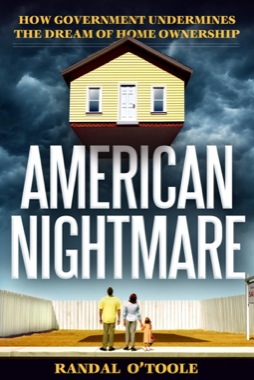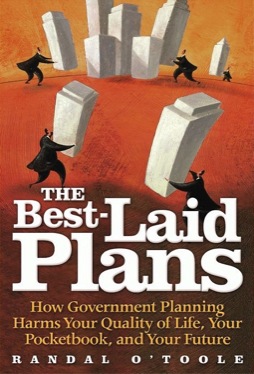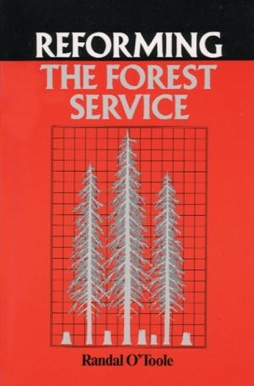A YouTube site called “Oh the Urbanity!” challenges the “myth” that five-stories is the “optimal” height for residential buildings. I would agree, except Oh the Urbanity! thinks that taller, not shorter, is better and criticizes other urbanists who are satisfied with “only” mid-rise buildings.
I’ve got news for Oh the Urbanity! Most Americans (surveys say 80 percent) wouldn’t want to live in your towers even if they cost no more than a similarly sized single-family home. They especially don’t want to live in mid-rise or high-rise buildings that cost a lot more, per square foot, than single-family homes.
That fact that self-described urbanists are arguing over whether five stories or ten stories is “optimal” just shows they are completely out of touch with reality. Imagine if some group calling themselves “New Nutritionists” got into a debate over whether Americans should regularly eat more Beluga caviar or foie gras. Forget about debating the health benefits: not only would regular consumption of these foods be beyond the budgets of most people, if Americans were given a menu with these two items, the typical responses would range from “eww! Fish eggs!” to “goose liver — yuch!”
It is notable that one of the greatest advocates for density on the West Coast, architect Peter Calthorpe, lives in a 4,800-square-foot single-family home on a 0.39-acre lot in Berkeley. Meanwhile, one of the greatest advocates for density on the East Coast, economist Edward Glaeser, lives on a 4,792-square-foot single-family home on a 6.32-acre lot in Weston, Massachusetts. These people want others to live in mid-rise or high-rise apartments but don’t practice what they preach.
The United States has plenty of land and doesn’t need to pack people into mid-rise, high-rise, or even dense low-rise housing. If every one of the nation’s 132 million households lived on a quarter-acre lot, they would occupy just 33 million acres, or less than 1.5 percent of the nation’s land area, and still spend less on housing than if they were in mid-rise or high-rise buildings.
I have no problem if someone wants to live in a five-story, ten-story, or fifty-story building and are willing to pay the cost of doing so. I do have a problem when people advocate using urban-growth boundaries and other rural land-use restrictions to create an artificial shortage of single-family homes, and then try to make up for that shortage but heavily subsidizing the construction of mid-rise or high-rise residential buildings that many people don’t want to live in even at the subsidized prices. It is probably too much to hope that the squabble between the mid-rise and high-rise advocates will take up so much of their time that they will leave the rest of us alone.








The HEIGHT of development is determined by urban land prices. If a square foot of land costs “X” dollars to obtain/build on, a 3 story structure namely a townhouse/flats or apartments has to have a specific quantity of units rentable/sellable to amortize the land purchase. URBAN land prices dictate whether it’s profitable to have a 3 story town house or a 20 story building.
The population of Manhattan in 1900 was 1,850,000 people. This was part of a total population of 3,437,202 for New York City as a whole, that’ s 200,000 more than present population but Living space demands have changed since 1900, when the tallest building was 390 feet not the present occupied 1,550 feet which is 4x higher. The Costs of density are greater than the economies of scale. If the economies of scale of density were greater than the costs of density, the MTA would be flush with cash and not need auto drivers to pitch 9 dollars a day drive past 59th street, if the economies of scale of density were greater; the tallest buildings would have the cheapest rents.
Funny how Caviar is “Beyond” income range of many people.
100 years ago, Sturgeon, and associated fishes and caviar was so abundant; they gave it away for FREE at bars because it’s salinity acrewed additional thirst…….SALTY stuff tastes good, and makes you thirsty.
Lobster and associated Seafood; was Poverty food given to slaves 3-4 times a week. 200 years later… imagine eating lobster 3 times a week. Lobster was Bycatch, ground up as fertilizer.
AP your link to your survey is busted; fix your HTML.
“I have no problem if someone wants to live in a five-story, ten-story, or fifty-story building and are willing to pay the cost of doing so.”
That can’t be right because you think people should be able to enforce covenants that prevent that very thing.
Did some googling, is this it, maybe?
https://www.nar.realtor/reports/2011-community-preference-survey
Interesting conclusion from that (15 years old) survey:
“When selecting a community, nearly half of the public (47%) would prefer to live in a city (19%) or a suburban neighborhood with a mix of houses, shops, and businesses (28%). Another four in ten (40%) would prefer a rural area (22%) or a small town (18%). Only one in ten (12%) say they would prefer a suburban neighborhood with houses only.”
A 15 year old survey. Before the pandemic or when these young adults grew up.
janehavisham: The overwhelming majority of recent research contracts your assertion.
https://www.redfin.com/news/millennial-homebuyers-prefer-single-family-homes/?msockid=3376d03d23ee6cda2a3dc5b322c36d99
https://www.pewresearch.org/short-reads/2023/08/02/majority-of-americans-prefer-a-community-with-big-houses-even-if-local-amenities-are-farther-away/
https://www.builderonline.com/money/economics/80-percent-of-americans-prefer-single-family-homeownership_o
ArtThomas, I agree with the assumption that most Americans prefer living in a single-family home. However, attached single-family homes are also included in that category. Many people I know would love to live in a New York City brownstone, but due to high demand, they are too expensive for most. Looking at the percentages from those websites, the issue seems to be an oversupply of detached single-family homes relative to demand, while there aren’t enough single-family homes in walkable neighborhoods to meet the number of people who want them.
There is no “oversupply of single family homes”. If there were the price would drop dramatically. From what it sounds like you are trying to warp a relatively clear statistics, namely that people want to live in single family homes, into your pro density narrative.
You’re aware that “single-family homes” can be attached in dense, walkable neighborhoods, right? In fact, these homes and the land they occupy tend to be more expensive due to the high demand for them. They’re called terrace houses, row homes, row houses, brownstones, and more.
Most do not want attached housing. However not all locations are the same.
Some are willing to live in attached housing to be very close to job centers, amenities, and entertainment. Not mention it is easier to get around without owning a car. Those locations are scarce.
Even if the cost of land and taxes are zero for detached homes, there is still other costs and responsibilities that come with it unless if builders build below 1,500 sq. ft.
Either allow more dense structures in the inner cities and/or offer the benefits of the inner cities on the outskirts of the metro area. Building more tract cookie cutter housing with “stroads” and strip malls won’t do jack.
The YouTube channel did a good job on a video about O’Toole.
it just depends where you are at and that locales condition. I’m in roanoke va in sw Virginia, railroad packed up and left, now some level of biotech, and the native population dying off and aging. basically stuck at 100k people for 30 plus years….its much easier to get around here by automobile….and if you go guerilla via bicycle in some instances can be safe and not worrisome and even pleasant.
Roanoke is a wonderful city.
Something that has been talked about for years and years before covid was not people from moving further out in to afford a home but to move to a completely different metro.
Classic case is Phoenix. We saw this 50 years ago with Californians moving there, often times to be able to afford a home.
Despite it’s recent housing rice issues, there’s an argument that the rise of Austin is fueled by something like that. With employers moving offices and HQs there that attracts the people with the lower housing costs attracting the employers who know people will move for that.
In economics Bid Rent theory explains why some will pay higher prices for land in the middle. And it explains why those will then put more improvements on that land. But it seems to speak to how things work with a city.
Maybe what we’re seeing to some extent is Rent Bid theory but not confined to a single city but, for some, across the country.